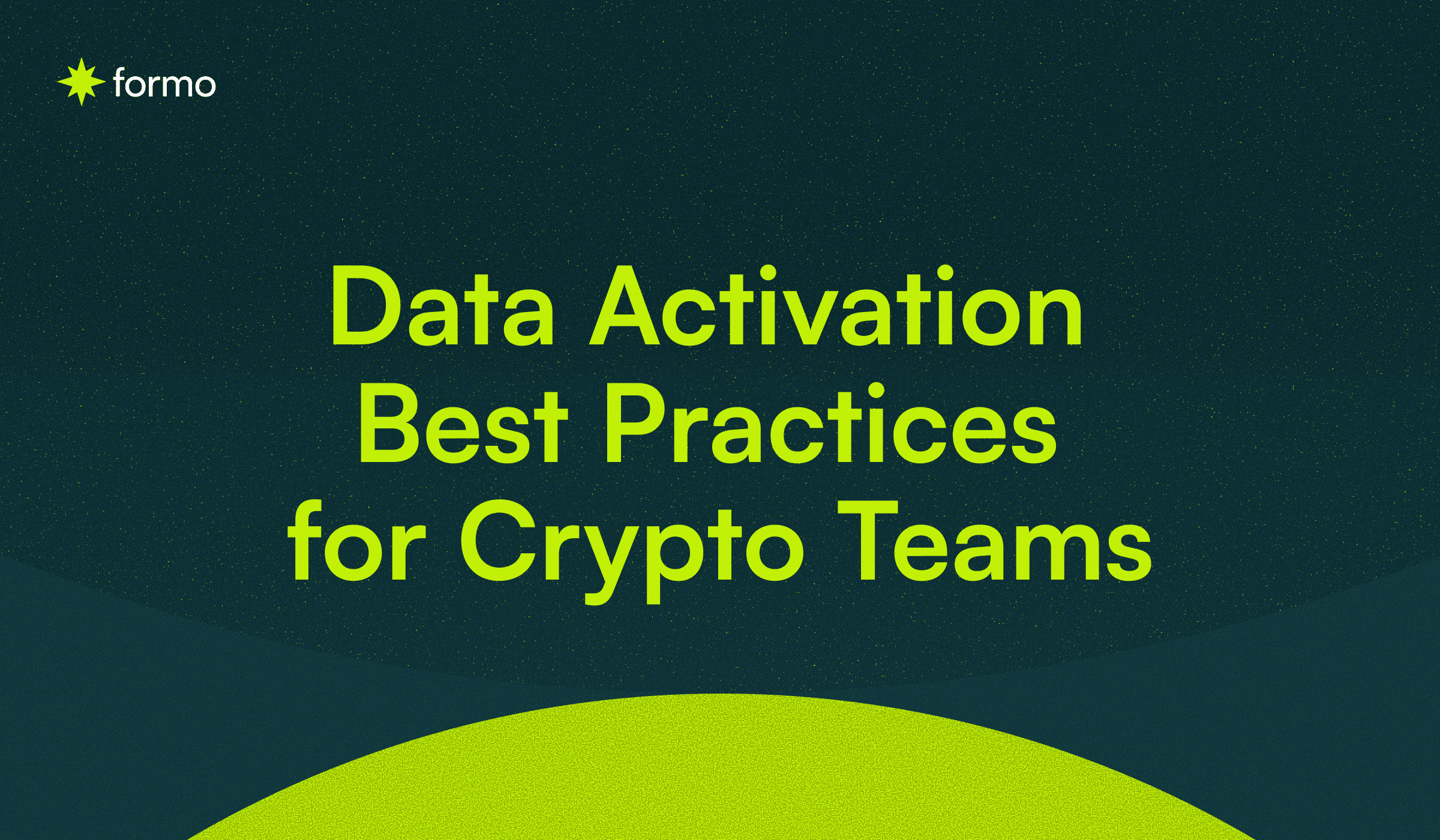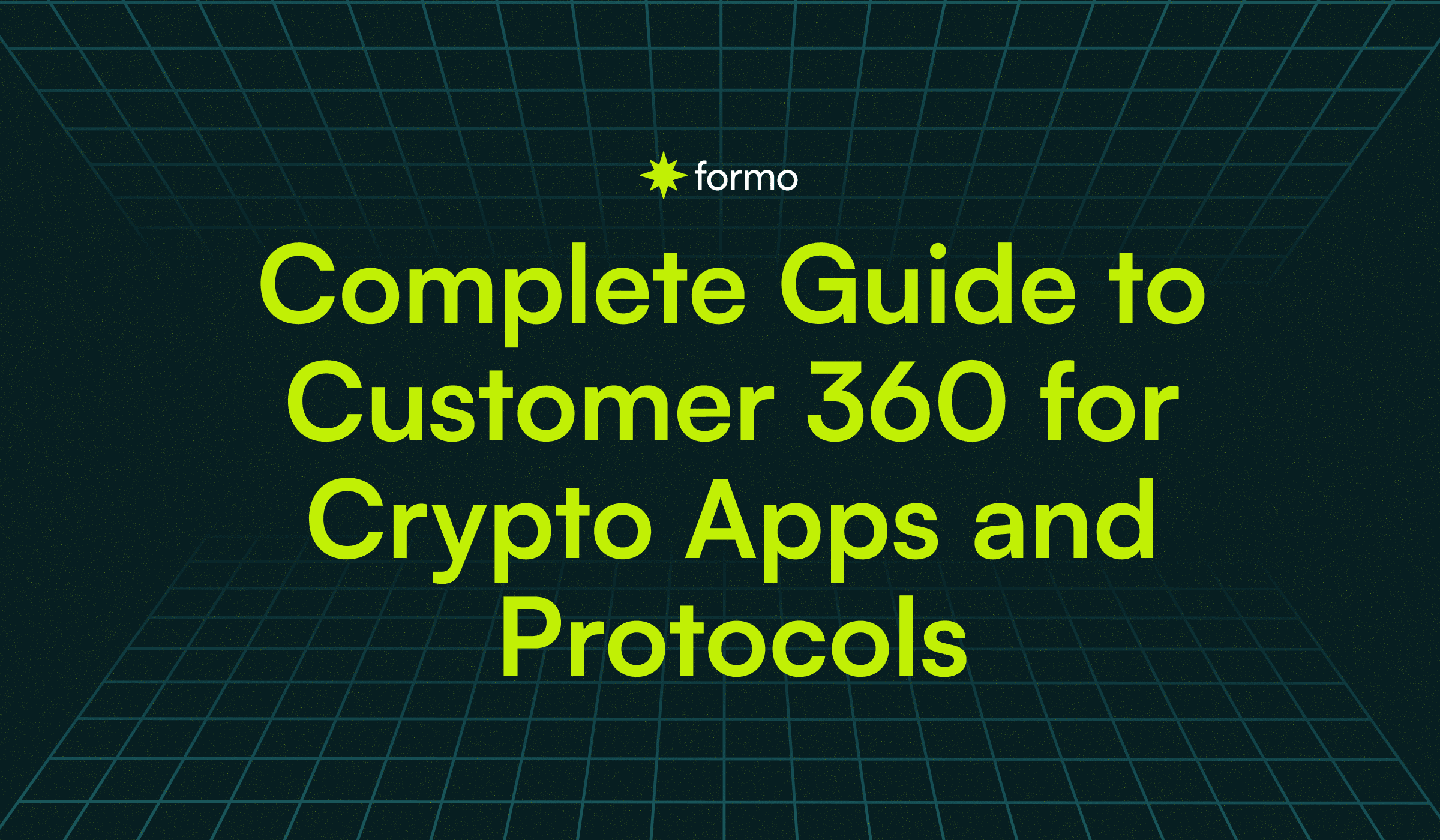Launching a product is never easy—how do you attract users and build the network effects that fuel growth? In Web2, companies rely on traditional go-to-market (GTM) strategies, investing heavily in sales and marketing. But Web3 is rewriting the playbook.
With tokens, users become owners. This shift demands new Web3 Go-to-market strategies, focusing on community-driven growth and innovative success metrics. In this article, we’ll explore how Web3 is transforming traditional GTM models and share actionable insights for teams aiming to succeed in crypto.
What are Web3 Go-to-market strategies?
GTM, or Go-to-Market, is the process of launching a new product or service. It involves identifying your target audience, crafting a tailored marketing strategy, and executing it effectively.
In Web2, brands invested heavily in sales and marketing to attract and retain users, leveraging vast amounts of user data to tighten their grip. This model predominantly benefited the platforms, leaving users with minimal rewards. The user acquisition funnel was central to Web2 Go-to-market strategies, guiding potential users through stages—awareness, interest, conversion, and retention. Success was measured by metrics such as lead conversion rates, click-through rates, and revenue per customer.
Web3 transforms the GTM process with token incentives, solving the cold-start problem in a whole new way. Instead of relying on hefty marketing budgets, Web3 projects use tokens to attract early users, rewarding them for their contributions. Instead of paying publishers and ad companies, Web3 projects cut the middlemen and reward users directly.
In Web2, GTM is all about acquiring customers through sales and marketing. In Web3, the scope widens to include developers, investors, and the community itself, making roles such as community management critical compared to traditional sales efforts.
Early adopters often evolve into evangelists, spreading the word and driving organic growth. Web3 Go-to-market strategies transfer control from corporations to communities, with decision-making and value creation fueled by collective input. Tokens play a pivotal role in motivating users and fostering collaboration.
Take Compound , for example—by rewarding lenders and borrowers with COMP tokens through a liquidity mining program, the protocol's Total Value Locked (TVL) surged from $100M to $600M after launch. This token-based model allows users to become a more powerful driver of growth than sales teams in Web2.
GTM for DeFi apps and protocols with a token
Decentralized apps and protocols, while often starting with a core team, use tokenomics to attract new members, reward contributors, and align incentives. Unlike traditional companies, they blur the lines between owner, shareholder, and user through clear missions and strong engagement.
DeFi apps such as Uniswap use unique GTM strategies. Initially started by centralized teams, DeFi projects have decentralized to enhance security and distribute control via governance tokens and DAOs. Key go-to-market strategies include:
Start with deep ecosystem integration to drive early utility. Plug into existing wallets, explorers, L2s, restaking layers, and liquidity venues to make your protocol discoverable where users already operate. Early partnerships (or co-marketing with infra partners) give you distribution before you have an audience of your own.
Design incentive programs that create aligned, sustainable demand—not just mercenary flows. Structure token rewards around actual usage, retention, and protocol-positive actions (e.g., providing real liquidity, staking, or performing recurring actions). Supplement incentives with clear analytics and transparency so power users can measure ROI.
Build a metrics-driven content, community, and developer motion. Publish dashboards, analytics, and proof-of-impact data to demonstrate traction and attract contributors, integrators, and liquidity providers. Pair this with active community education (threads, tutorials, office hours) to convert curious users into long-term participants and advocates.
Web3 Go-to-market Metrics for DeFi DAOs:
Total Value Locked (TVL): Tracks assets engaged in the protocol.
Unique Token Holders: Measures token distribution and engagement.
Community Engagement: Assesses activity and sentiment within the DAO.
Developer Activity: Reflects contributions to the ecosystem.
Integrations: Evaluate the protocol’s connections with other services.
By blending Web2 and Web3 Go-to-market strategies, projects can achieve wider adoption while maintaining the core values of decentralization and community-driven growth. As we explore hybrid models, builders should consider the balance of these tactics in their go-to-market approach.
GTM for SaaS and platforms with no token
Companies with centralized teams and no tokens often act as gateways to Web3 infrastructure. Their go-to-market strategies frequently resemble Web2 approaches, especially in areas such as SaaS for other crypto companies.
Some companies in this quadrant utilize traditional SaaS models, such as Alchemy, which offers nodes-as-a-service with tiered subscription fees based on factors such as storage, node type, and request volume. Key go-to-market strategies include:
Product-Led User Acquisition: Attracting users through free or freemium models. This allows users to experience the product firsthand, often leading to organic referrals.
Channel-Led User Acquisition: Tailoring sales efforts to specific user segments (e.g., public vs. private sectors) with dedicated teams that understand and address their unique needs.
Channel Distribution: Partnering with other platforms to increase visibility. For example, OpenSea offers creators royalties on secondary sales, which naturally led to sharing and referrals.
Core tactics for launching a DeFi Project
Launching a DeFi project requires a combination of traditional tactics and innovative methods that cater to the decentralized ecosystem. Here are key Web3 Go-to-market strategies to ensure a successful launch:
Pre-Launch Community Building
Begin building your community before the official launch through social media, forums, and AMAs (Ask Me Anything sessions). Engage potential users early to generate excitement and collect feedback. Keep the momentum by sharing updates, behind-the-scenes content, and sneak peeks of upcoming features to sustain interest.
Token Launch Strategy
Select a fair launch model to avoid centralization and distribute tokens widely. This encourages early adoption and promotes community involvement. Plan your token launch in alignment with your project’s goals, using methods such as airdrops or presales to effectively reach your target audience.
Partnership Development
Form strategic partnerships with other Web3 projects, influencers, and platforms. Leverage their user base and credibility to enhance your project’s visibility. Look for collaboration opportunities on joint ventures or integrations that benefit both parties and expand your project’s ecosystem.
Marketing and PR
Focus on community-driven marketing strategies using platforms such as Discord, Twitter, and Reddit to build strong relationships with your audience. While these approaches are critical, don’t overlook traditional marketing channels. Utilize PR, content marketing, and other methods to reach a broader audience.
Web3 Go-to-market strategy framework
Let's put what we've learnde about the basic Web3 Go-to-market strategy into practice:
I. Pre-Launch Phase
The focus here is on creating awareness and building credibility. Key tactics include:
Market Intelligence: Identify the target audience, understand their pain points, and craft a compelling value proposition that highlights your product's unique benefits.
Market Segmentation: Define your Ideal Customer Profile (ICP) and tailor messaging for various user personas. This ensures your message resonates across different audience segments.
Competitive Analysis: Benchmark your product against competitors, identify similar audiences, and refine your value proposition based on this analysis.
Content Distribution: Reach your audience through blogs, social media, and newsletters. Share educational content early on to build trust and generate anticipation.
Partnerships: Establish strategic partnerships to extend your reach and showcase your product. Collaborate with brands that align with your values and objectives.
II. Launch Phase
Starting three weeks before launch and lasting for around six weeks, the goal is to drive user adoption. Key tactics include:
Announcement: Create a schedule for partnership announcements, milestone celebrations, and product launches across all channels.
Engagement Campaigns: Use airdrops, quests, and challenges to incentivize user participation and build excitement around your product.
III. Post-Launch Phase
Maximize reach and long-term impact by focusing on:
Data Analytics: Use both onchain and Web2 tools to analyze user behavior, optimize features, and pinpoint areas for improvement.
Grants Program: Launch a grants program to encourage innovation and build trust within your ecosystem.
Developer Relations Campaign (DevRel): Engage developers with hackathons and educational events to promote adoption and inspire new applications.
In Web3 go-to-market strategies, success is typically measured by community engagement, token utility, and shared purpose, rather than solely by revenue and headcount. The distinction between Web2 and Web3 lies in their goals, growth metrics, and success indicators. To succeed, builders should begin with a clear mission, cultivate a community that resonates with that mission, and tailor their GTM strategies and incentives to fit the Web3 landscape. By adapting traditional models to the unique aspects of Web3, brands can effectively navigate and thrive in this evolving digital frontier.
About Formo
Formo is a cutting-edge Web3 product analytics tool that harnesses Web3 forms, Analytics, and Wallet Data Platform (WDP) to address key data challenges in the Web3 space. Designed specifically for Web3 startups, Formo streamlines the development of consumer crypto apps, allowing teams to focus less on analytics and more on building their products.
Learn more:
Follow us on LinkedIn and Twitter, and join our community to learn how Formo turbocharges growth for leading teams across web3!
FAQs
1. How can early-stage Web3 projects compete without launching a token?
Early-stage projects can differentiate themselves without immediately launching a token by building a strong narrative, aligning with community values, and creating genuine developer evangelism. Instead of relying on token incentives, they can focus on shipping usable products, offering open-source contributions, and fostering transparent communication. Many successful teams delay token launches to avoid premature speculation and instead build credibility through adoption, partnerships, and sustainable growth channels.
2. What tools or platforms are most useful for tracking Web3 GTM success?
A variety of analytics and intelligence platforms can help teams measure their go-to-market effectiveness. Formo provides product analytics and funnel tracking tailored for onchain projects. Dune Analytics allows customizable dashboards for community and financial metrics. Token Terminal focuses on protocol financials and revenue. Nansen offers wallet activity, token flow insights, and community health signals. Teams often combine these tools to track TVL, retention, DAU/WAU, wallet growth, liquidity depth, and ecosystem activity, ensuring that their GTM efforts drive measurable onchain impact.
3. What role do community managers play in Web3 GTM strategies?
In Web3, community managers are the new marketers. They are responsible for nurturing relationships, moderating discussions, onboarding new users, and creating a sense of belonging. Beyond support, they often play a key role in governance facilitation, content creation, and community-led growth experiments. Their ability to build trust and activate grassroots participation can make or break a project’s early GTM success.
4. Can Web3 projects benefit from traditional GTM tactics?
Yes. Traditional Web2 GTM tactics remain valuable when localized for Web3 audiences. Influencer marketing works when collaborating with trusted creators and thought leaders in crypto. SEO and content marketing help projects capture long-tail keyword demand and educate newcomers. Public relations (PR) is still critical for credibility, especially when announcing partnerships, funding rounds, or product launches. The key is tailoring these approaches to Web3 culture by emphasizing transparency, decentralization, and community alignment rather than just polished corporate messaging.
5. How do GTM strategies differ across Web3 verticals like DeFi, NFTs, and Gaming?
Each Web3 vertical requires a unique GTM approach tailored to its audience:
DeFi protocols prioritize liquidity incentives, security audits, and institutional partnerships while highlighting TVL, yield opportunities, and composability.
NFT projects rely heavily on cultural virality, creative collaborations, and community storytelling. Success often hinges on branding and social momentum.
Web3 gaming projects focus on player retention, guild and DAO partnerships, cross-game economies, and engaging gameplay loops that balance fun with financial incentives.
6. When is the right time for a Web3 project to launch a token?
Launching a token too early can backfire by attracting speculators instead of real users. The right time is usually after product-market fit is established, when the token has a clear role in governance, utility, or incentive alignment. Successful projects often wait until they have a loyal community, active usage metrics, and a proven value loop that benefits from tokenization.
7. How should Web3 projects measure GTM success beyond hype and speculation?
Instead of focusing solely on short-term price action or follower counts, projects should measure sustainable onchain metrics such as daily active wallets, transaction retention, liquidity depth, governance participation, and developer adoption. Offchain indicators like community engagement, sentiment, and brand authority should also be tracked. A balanced GTM dashboard blends quantitative (onchain data) with qualitative (community health) signals.
8. What are the biggest mistakes Web3 teams make in their GTM strategies?
Common pitfalls include:
Launching a token prematurely without clear utility.
Ignoring community feedback or over-centralizing decision-making.
Over-reliance on short-term incentives like airdrops without sustainable retention strategies.
Neglecting storytelling and education, leaving users confused about the mission.
Failing to adapt GTM strategies across verticals or regions, missing cultural nuances in global crypto adoption.





